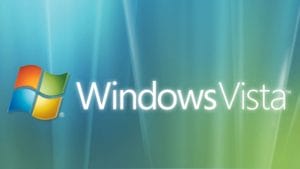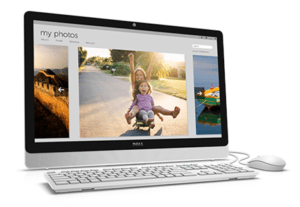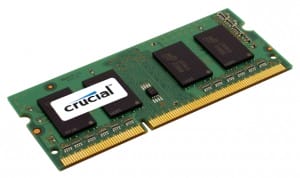Vista Age
 Vista Age: a reader asks…
Vista Age: a reader asks…
My aging Dell desktop PC has Windows Vista on it, and I don’t see many updates coming anymore from Microsoft. Is it time for a new computer?
I think it’s about time. You’ve got maybe six more months of basic security support coming to you from Microsoft, and then they’ll pull the plug on Vista (on April 11, 2017). Every Windows product has a lifecycle. The lifecycle begins when a product is released and ends when it’s no longer supported. Microsoft gives you two levels of support: mainstream and extended. At some point (April 2012 for Vista) Microsoft stops giving you mainstream support, and 5 years later the extended support plug is pulled. Here’s what these two types of support mean:
- Mainstream Support: You’ll see product design and feature updates, security updates and non-security updates. You can also get free help with licensing and other limited tech support for your Microsoft product. For a fee you can receive other support from Microsoft. You can also delve into the Microsoft Knowledge Base for self-help.
- Extended Support: You’ll see only security updates. For a fee you can receive other support from Microsoft. You can also delve into the Microsoft Knowledge Base for self-help.
So Windows Vista is now on extended support only, so you won’t see any new features. Of particular significance is that you won’t see those non-security updates, which are often bug-fixes. Once mainstream support ends, Microsoft is done with improving the software, and you’re stuck with whatever you have. Your recourse is to either upgrade the operating system on your computer, or get yourself a new computer. So which way to go?
 If money isn’t an overwhelming problem for you, it’s going to be a lot easier to just replace the computer with a new model. You can simply buy a new desktop PC, which will come with a new keyboard and mouse. You’d continue to use your existing monitor and speakers. If you have an old CRT-style monitor, then you might want to consider upgrading that to an LCD flat-screen monitor as well. Or you might buy a new all-in-one touchscreen computer, such as the Dell Inspiron 24 3000 (starting at $450 from dell.com, a touchscreen model is available starting at $700). The advantage of an all-in-one is that it generally takes up less space than the separate components of a desktop CPU and monitor. Or you can certainly do a simple one-for-one replacement of your desktop CPU, Dell standard towers start at $450.
If money isn’t an overwhelming problem for you, it’s going to be a lot easier to just replace the computer with a new model. You can simply buy a new desktop PC, which will come with a new keyboard and mouse. You’d continue to use your existing monitor and speakers. If you have an old CRT-style monitor, then you might want to consider upgrading that to an LCD flat-screen monitor as well. Or you might buy a new all-in-one touchscreen computer, such as the Dell Inspiron 24 3000 (starting at $450 from dell.com, a touchscreen model is available starting at $700). The advantage of an all-in-one is that it generally takes up less space than the separate components of a desktop CPU and monitor. Or you can certainly do a simple one-for-one replacement of your desktop CPU, Dell standard towers start at $450.
If budget is a huge concern for you, then you might want to consider upgrading your Vista desktop PC to Windows 7. Microsoft won’t pull the plug on extended support for Windows 7 until January 2020, so that would give you more time. But some things to consider:
 the amount of RAM you have: if you have less than 4gb of RAM in your Vista desktop PC, then you might need to upgrade your RAM as well. You can buy direct from places like Crucial.com or Kingston.com. Bumping up your RAM could cost you less than $50, but you need to use their online scanner/configurator to make sure your system is upgrade-able.
the amount of RAM you have: if you have less than 4gb of RAM in your Vista desktop PC, then you might need to upgrade your RAM as well. You can buy direct from places like Crucial.com or Kingston.com. Bumping up your RAM could cost you less than $50, but you need to use their online scanner/configurator to make sure your system is upgrade-able.- the age of your internal hard drive: if your spinning hard drive is more than 4 years old, it could potentially fail on you at any time. You could certainly get a new, spinning hard drive for well under $100, or you could pay just a bit more and get a speedy new solid-state hard drive.
- the potential for other hardware failure: the only other moving parts are cooling fans, which do wear out as well. Generally they’ll give you plenty of warning by sounding louder and different than usual. A new fan could cost you just $10, a new CPU fan could be a bit more.
All that plus the cost of the Windows 7 upgrade software (license key), which could run you up to $140 (such as at newegg.com). If you add up the numbers above, you might find yourself approaching the cost of a new desktop CPU, so if that’s your situation, by all means, avoid the hassle of upgrading and get yourself a new CPU.
Let me end with the risks you take continuing to use Windows Vista beyond April 2017. Vista will no longer get any security updates, and as you know, hackers are constantly finding and exploiting vulnerabilities. This could put your personal information at risk including online banking or shopping, email, social media and any website passwords you type into the computer. I really don’t think it’s worth the risk.
This website runs on a patronage model. If you find my answers of value, please consider supporting me by sending any dollar amount via:
or by mailing a check/cash to PosiTek.net LLC 1934 Old Gallows Road, Suite 350, Tysons Corner VA 22182. I am not a non-profit, but your support helps me to continue delivering advice and consumer technology support to the public. Thanks!
 the amount of RAM you have: if you have less than 4gb of RAM in your Vista desktop PC, then you might need to upgrade your RAM as well. You can buy direct from places like
the amount of RAM you have: if you have less than 4gb of RAM in your Vista desktop PC, then you might need to upgrade your RAM as well. You can buy direct from places like 





